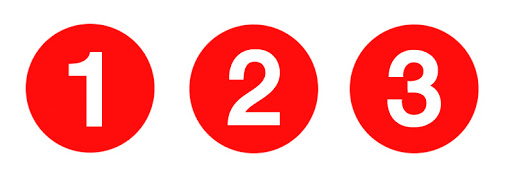 The Torah mentions (in Parsha Yitro) that Torah was given at Mount Sinai in the third month of the Jews leaving Egypt. The text alone seems to be no more than chronological info, a data point. But the Talmud (in tractate Shabbos) makes a bigger deal of the fact that it was specifically the third month, as the number 3 has Torah significance. Rabbeynu Nissim, an on-the-page Talmud commentary printed on some tractates goes to town with this. He finds all types of connections between Torah and the number 3, some meaningful, some seemingly trivial, a whole long list of 3’s.
The Torah mentions (in Parsha Yitro) that Torah was given at Mount Sinai in the third month of the Jews leaving Egypt. The text alone seems to be no more than chronological info, a data point. But the Talmud (in tractate Shabbos) makes a bigger deal of the fact that it was specifically the third month, as the number 3 has Torah significance. Rabbeynu Nissim, an on-the-page Talmud commentary printed on some tractates goes to town with this. He finds all types of connections between Torah and the number 3, some meaningful, some seemingly trivial, a whole long list of 3’s.
But wouldn’t we be able to do the same with number 1? or number 4? or 7? Couldn’t we find relevant trivia to find the significance of each of these numbers to Torah? Why the big focus on number 3?
The Rebbe explains that the number 3 really does have meaningful significance to Torah, and Torah’s purpose in our world. Look at it this way. One represents singularity, two represents division or separation, but three is a reconciliator, number 3 finds a middle ground, a connector, as we say in our morning prayers “two conflicting verses are reconciled by a third verse that mediates between them and brings them together.”
In academic-speak you might say: 1 = thesis, 2 = antithesis, and 3 = synthesis. By focusing on #3, Torah is telling us about its focus and goal to be more of a #3 than a #1. It’s more about synthesis than the thesis, more about a unity connecting disparate parts than a singularity which never had any division in the first place.
—-
There is so much Chassidus on this point that in my Yeshiva years I remember an older yeshiva student referring to this concept as “the Rebbe’s ‘sugya’ (treatise) on threes”. But here’s an example from Jewish campus life (especially since J.F.’s family is here this Shabbos, and this story is about him).
This past Simchat Torah 2019, a freshmen student J.F. was dancing up a storm, tireless, energetic, in the circle the whole time. Hakafot started just after 8pm and he kept swirling and dancing, jumping on his feet until midnight. He started songs, kept the energy going, was full of Simchat Torah energy. At some point in a lull on the dancing, between Hakafot circuits he told me that back home on Long Island his father is a big energizer of the Simchat Torah dancing. He starts songs, he does hand-motions, he’s very into it. And his father was always a little disappointed that as a teen his son J.F. wouldn’t stay long at the dancing but would wander outside to the lobby where he would chat and shmooze with friends. But this year, he is like his father, overdoing it, totally invested, in it all night!
It’s really as simple as 1,2,3… 1 represents him as a child of his father, 2 = that breakaway, move apart in the Shul in Long Island and then the whole move and separation coming to college upstate, but 3 is what brings them back together, doing the same thing! But the sameness isn’t the same, J.F. doing it on his own, and even with the separation and distance makes it all the more meaningful. #3 is really where it’s at. Torah = 3.
